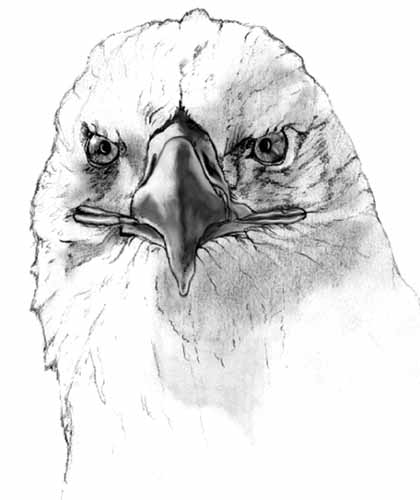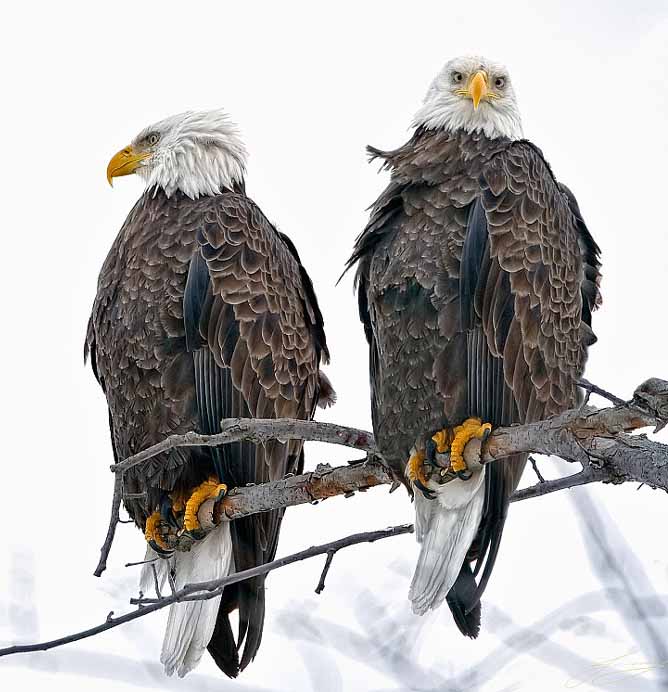Eagle is the common name for many large birds of prey of the family Accipitridae. Eagles belong to several groups of genera, some of which are closely related. Most of the 68 species of eagles are from Eurasia and Africa. Outside this area, just 14 species can be found - 2 in North America, 9 in Central and South America, and 3 in Australia.
Eagles are not a natural group but denote essentially any kind of bird of prey large enough to hunt sizable (about 50 cm long or more overall) vertebrates.
Eagles symbolize spirit, freedom, and self-expression. Eagles also have a solid connection to the element of air. This connection reminds us that we are more than just physical beings; we have a spiritual side as well. Our thoughts and intentions create who we become.
Seeing an eagle can mean it's time to try something new. Seeing an eagle in your dreams means having to face an important decision - which might have to do with a spiritual conflict in your life what is something more tangible.
In ancient Sumerian mythology, the mythical king Etana was said to have been carried into heaven by an eagle. Classical writers such as Lucan and Pliny the Elder claimed that the eagle was able to look directly at the sun, and that they forced their fledglings to do the same. Those that blinked would be cast from the nest. This belief persisted until the Medieval era.
The eagle is the patron animal of the ancient Greek god Zeus. In particular, Zeus was said to have taken the form of an eagle in order to abduct Ganymede, and there are numerous artistic depictions of the eagle Zeus bearing Ganymede aloft, from Classical times up to the present.
Eagles appear metaphorically in many translations of the Old Testament. God is spoken of as carrying Israel on "eagles' wings" in Exodus 19:4 and Isaiah 40:31, and Psalm 103 mentions renewing one's youth "as the eagle". In explaining this rejuvenation, Augustine of Hippo says in his commentary on the Psalms that eagles' beaks overgrow as they age and that they break them against rocks to restore them. The translation, however, is uncertain: the word in the Hebrew can also be translated vulture, and is listed alongside specific kinds of vulture in Leviticus' discussion of unclean animals.
The eagle is also often used in Christian iconography to represent the Gospel of John, and eagle-shaped lecterns are common in Anglican and some Roman Catholic churches. The eagle was believed to be able to look directly into the sun in the same way that the Gospel of John looks directly at Jesus' divinity, and the great distances the eagle flies represent the spread of the gospel to the ends of the earth.
In Canada, the poaching of eagle feathers for the booming U.S. market has sometimes resulted in the arrests of First Nations person for the crime.
The Moche people of ancient Peru worshiped the eagle and often depicted eagles in their art.
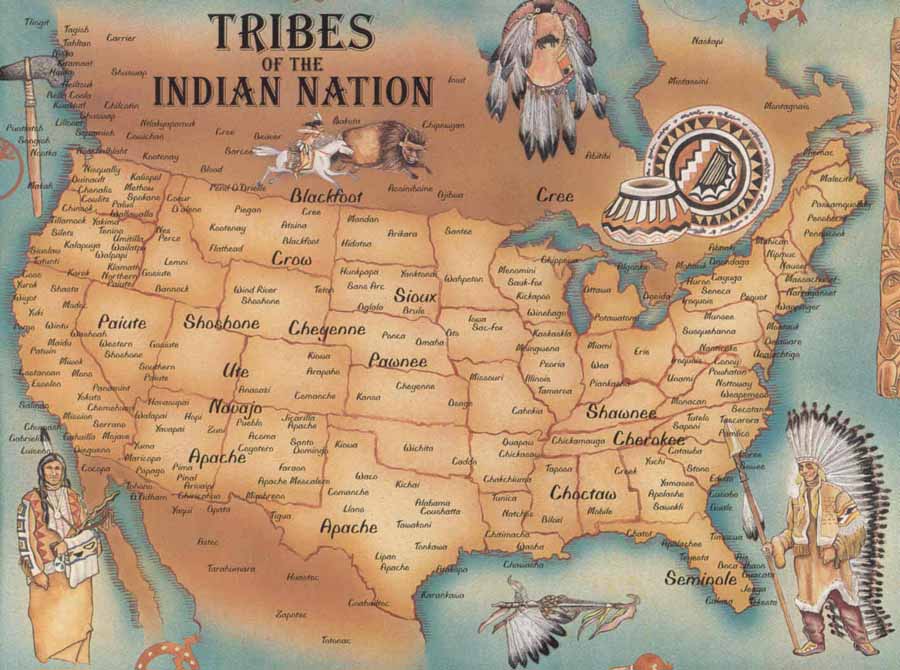
The United States eagle feather law stipulates that only individuals of certifiable Native American ancestry enrolled in a federally recognized tribe are legally authorized to obtain eagle feathers for religious or spiritual reasons.
While every Native American tribe has their own set of customs and beliefs, one thing virtually every tribe has in common is a reverence for eagles. Native Americans view them as powerful medicine animals that represent bravery, honor, and insight. In addition, because eagles have the ability to fly, many tribes view them as having a connection to the Creator and possessing the ability to communicate with both the physical and supernatural worlds. In fact, the mythical Native American bird, the thunderbird, is based on the eagle and yet is considered to have even greater powers.
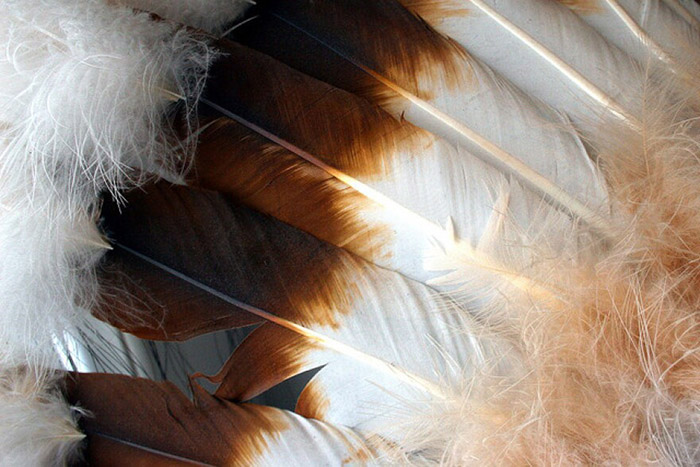
For Native Americans, eagle feathers are also sacred. Eagles and their feathers are protected under federal law. However, Native Americans with certified ancestry are permitted to obtain and use eagle feathers in spiritual ceremonies. Traditionally, when a warrior displayed bravery in a battle, he was given an eagle feather. Hence, the iconic headdresses worn by the plains tribes that contained many eagle feathers represented a brave and powerful warrior. In addition, Native Americans believe that if a person finds an eagle feather on the ground, it is a gift from the Sky and the Earth.
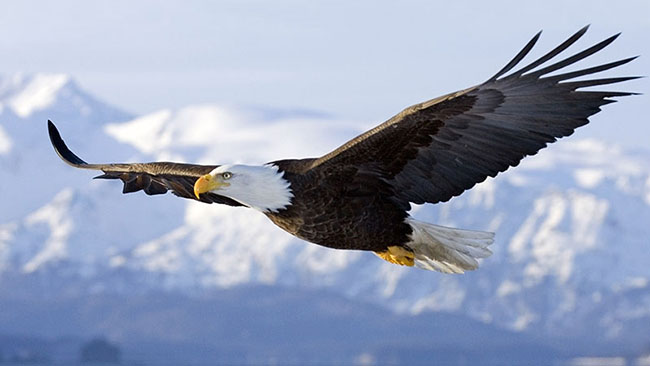
The Bald Eagle is a bird of prey found in North America. A sea eagle, it has two known sub-species and forms a species pair with the White-tailed Eagle (Haliaeetus albicilla). Its range includes most of Canada and Alaska, all of the contiguous United States, and northern Mexico. It is found near large bodies of open water with an abundant food supply and old-growth trees for nesting.
The Bald Eagle is an opportunistic feeder which subsists mainly on fish, which it swoops down and snatches from the water with its talons. It builds the largest nest of any North American bird and the largest tree nests ever recorded for any animal species, up to 4 m (13 ft) deep, 2.5 m (8.2 ft) wide, and 1 metric ton (1.1 short tons) in weight Sexual maturity is attained at the age of four to five years.
Bald Eagles are not actually bald; the name derives from an older meaning of "white headed". The adult is mainly brown with a white head and tail. The sexes are identical in plumage, but females are about 25 percent larger than males. The beak is large and hooked. The plumage of the immature is brown.

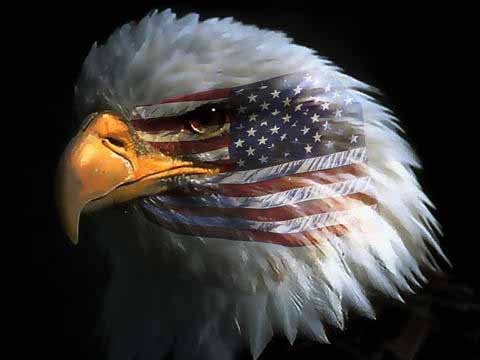
The Bald Eagle is both the national bird and national animal of the United States of America. The Bald Eagle appears on its Seal.
Once a common sight in much of the continent, the Bald Eagle was severely affected in the mid-20th century by a variety of factors, among them the thinning of egg shells attributed to use of the pesticide DDT. It is estimated that in the early 18th century, the Bald Eagle population was 300,000-500,000 but by the 1950s there were only 412 nesting pairs in the 48 contiguous states of the US. In the late 20th century it was on the brink of extirpation in the continental United States. Populations recovered and the species was removed from the U.S. federal government's list of endangered species on July 12, 1995 and transferred to the list of threatened species. It was removed from the List of Endangered and Threatened Wildlife in the Lower 48 States on June 28, 2007. Read more ...
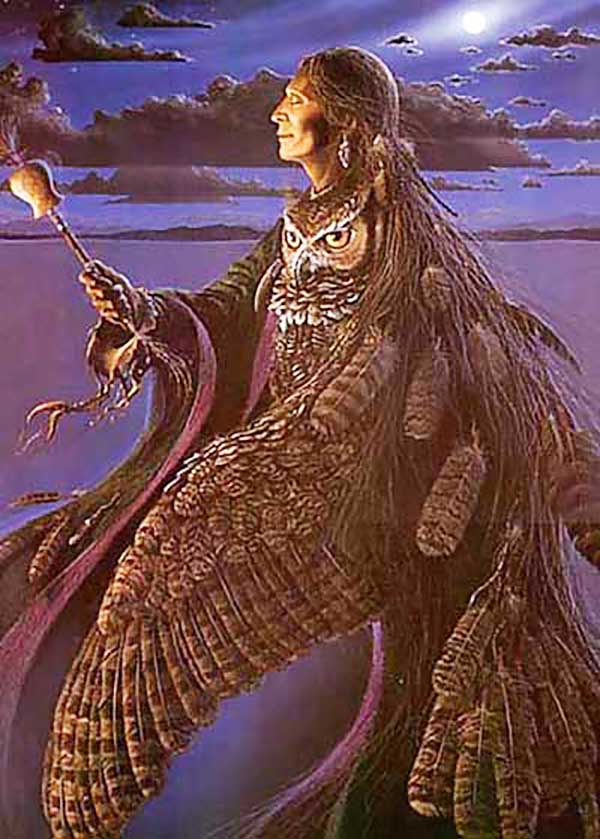
The Bald Eagle is a sacred bird in some North American cultures, and its feathers, like those of the Golden Eagle, are central to many religious and spiritual customs among Native Americans. Eagles are considered spiritual messengers between gods and humans by some cultures.
Many pow wow dancers use the eagle claw as part of their regalia as well. Eagle feathers are often used in traditional ceremonies, particularly in the construction of regalia worn and as a part of fans, bustles and head dresses. The Lakota, for instance, give an eagle feather as a symbol of honor to person who achieves a task. In modern times, it may be given on an event such as a graduation from college.
The Pawnee considered eagles as symbols of fertility because their nests are built high off the ground and because they fiercely protect their young. The Kwakwaka'wakw scattered eagle down to welcome important guests. The Choctaw explained that the Bald Eagle, who has direct contact with the upper world of the sun, is a symbol of peace.
During the Sun Dance, which is practiced by many Plains Indian tribes, the eagle is represented in several ways. The eagle nest is represented by the fork of the lodge where the dance is held. A whistle made from the wing bone of an eagle is used during the course of the dance. Also during the dance, a medicine man may direct his fan, which is made of eagle feathers, to people who seek to be healed. The medicine man touches the fan to the center pole and then to the patient, in order to transmit power from the pole to the patient. The fan is then held up toward the sky, so that the eagle may carry the prayers for the sick to the Creator.
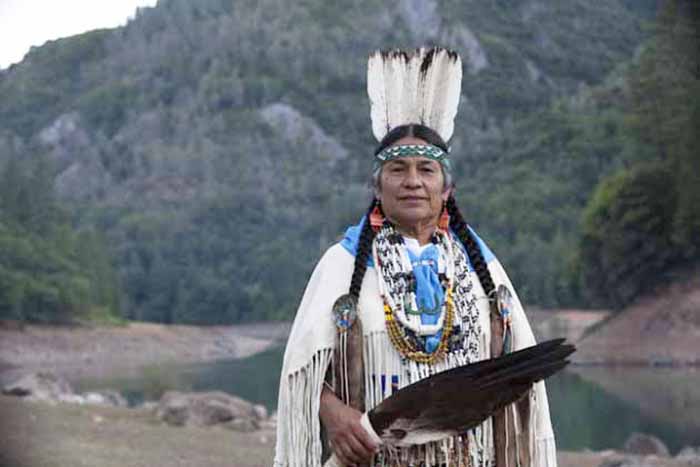
Current eagle feather law stipulates that only individuals of certifiable Native American ancestry enrolled in a federally recognized tribe are legally authorized to obtain or possess Bald or Golden Eagle feathers for religious or spiritual use. The constitutionality of these laws has been questioned by Native American groups on the basis that it violates the First Amendment by affecting ability to practice their religion freely.
The National Eagle Repository, a division of the FWS, exists as a means to receive, process, and store bald and golden eagles which are found dead, and to distribute the eagles, their parts and feathers, to federally recognized Native American tribes for use in religious ceremonies.
